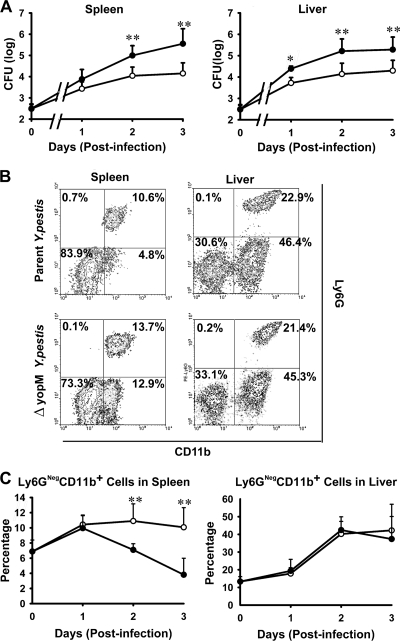FIG. 1.
Infection dynamics for ΔyopM and parent Y. pestis KIM5. C57BL/6 mice were infected i.v. with 400 bacteria that had been grown at 26°C. At the indicated times, groups of mice were analyzed for bacterial viable numbers (CFU) in liver and spleen, and populations of live leukocytes in liver and spleen were distinguished by flow cytometry. (A) CFU in spleens and livers of mice infected with parent (filled circles) or ΔyopM (open circles) Y. pestis KIM5. The point at time zero indicates the dose given to the mice. (B) Flow cytometric scatter plots illustrating the discrimination of populations of live leukocytes for the presence of Ly6G and CD11b surface markers. Representative data are shown for leukocytes from liver and spleen of an individual mouse infected with parent or ΔyopM Y. pestis on day 3 p.i. The percentage of total live leukocytes contained in each quadrant is given. (C) Ly6G− (Ly6GNeg) CD11b+ cells (MOs, Mφs, and myeloid DCs) expressed as percentage of total live leukocytes in spleens and livers of mice infected with the parent (filled circles) or the ΔyopM (open circles) strain. The point at time zero indicates the value for uninfected mice. In panels A and C, each datum point represents the average of values from 26 mice. The error bars indicate the standard deviations. Significant differences by unpaired Student's t test comparing data from mice infected with the parent and mutant strains are indicated (*, P < 0.05; **, P < 0.01).

